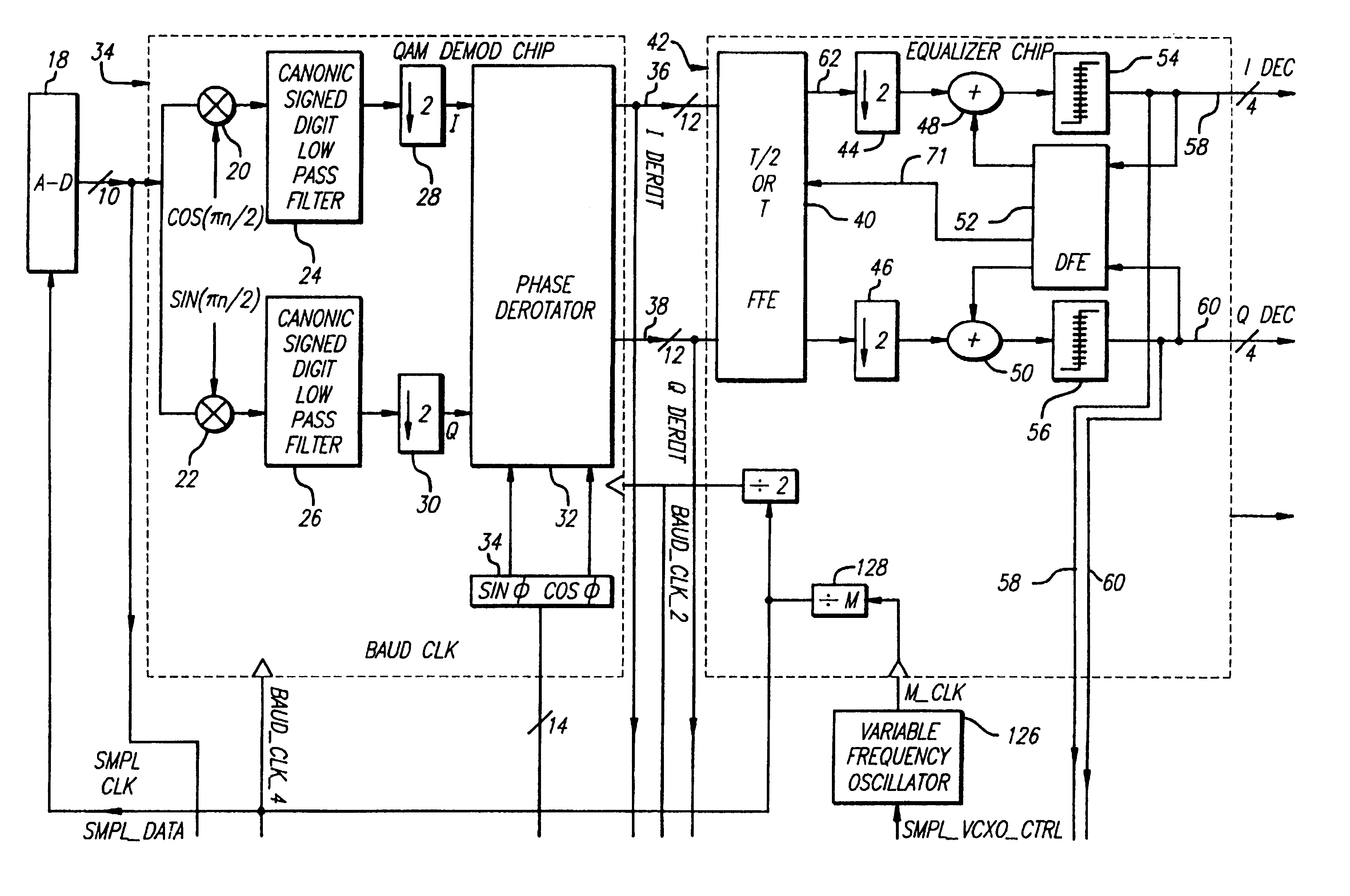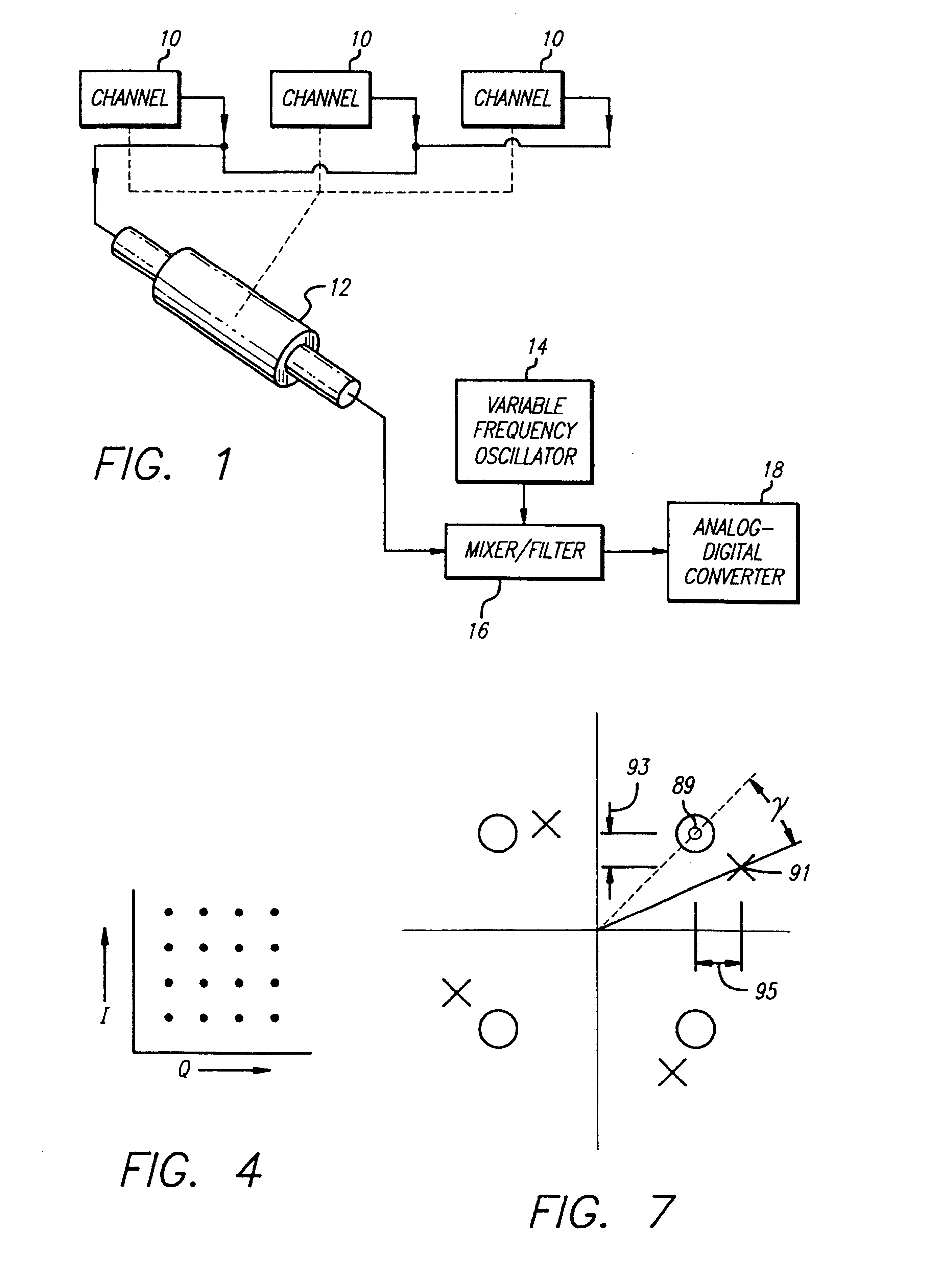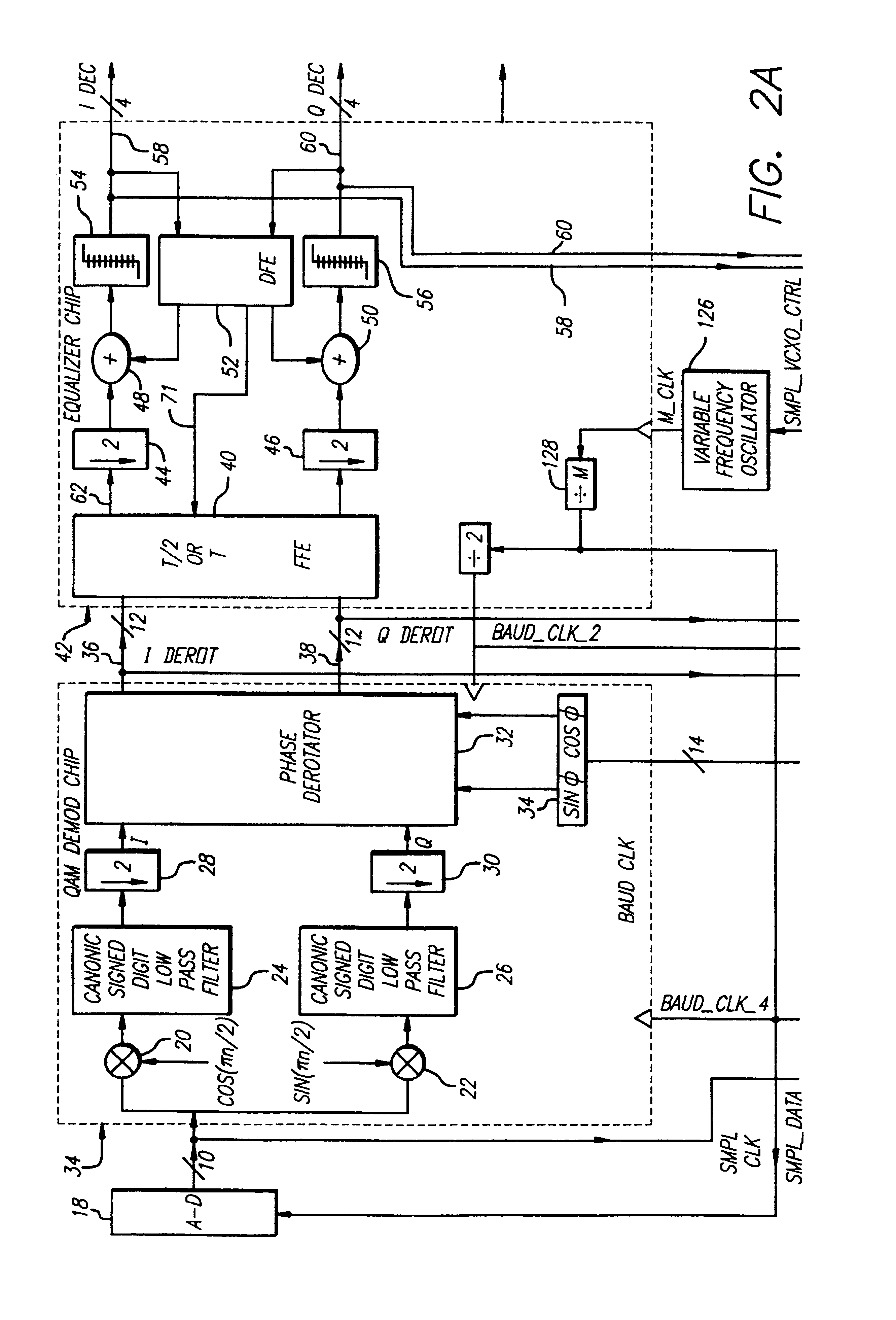System for, and method of, processing quadrature amplitude modulated signals
- Summary
- Abstract
- Description
- Claims
- Application Information
AI Technical Summary
Benefits of technology
Problems solved by technology
Method used
Image
Examples
Embodiment Construction
[0020]In one embodiment of the invention, a plurality of television stations or channels 10 (FIG. 1) are provided to transmit television signals (video and audio) through a coaxial cable 12 to a receiver (not shown). Each of the television channels 10 provides a carrier signal at a frequency individual to such channel. The carrier frequency for the lowest one of the stations or channels 10 may be approximately thirty (30) megahertz (30 MHz) and the carrier frequency for the highest one of the stations or channels may have a value of approximately seven hundred and fifty megahertz (750 MHz). The separation in frequency between adjacent pairs of channels may be approximately six megahertz (6 MHz).
[0021]The television signals (video and audio) are digitally compressed and encoded and transmitted through the coaxial cable 12 using quadrature amplitude modulation. The television signals modulated as described above are transmitted through the coaxial cable 12 at a particular baud rate. T...
PUM
 Login to View More
Login to View More Abstract
Description
Claims
Application Information
 Login to View More
Login to View More - R&D
- Intellectual Property
- Life Sciences
- Materials
- Tech Scout
- Unparalleled Data Quality
- Higher Quality Content
- 60% Fewer Hallucinations
Browse by: Latest US Patents, China's latest patents, Technical Efficacy Thesaurus, Application Domain, Technology Topic, Popular Technical Reports.
© 2025 PatSnap. All rights reserved.Legal|Privacy policy|Modern Slavery Act Transparency Statement|Sitemap|About US| Contact US: help@patsnap.com



